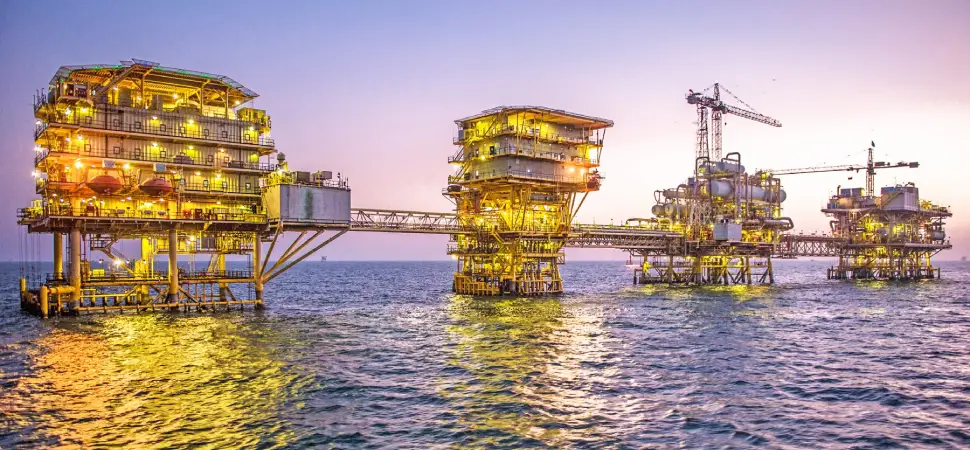01.07.2024
Евгений Лебедев
263

Oil, wheat, gold and other commodities are in the center of attention and major movements in the stock markets due to growing tensions on the world stage, growing economic and environmental concerns. The war in Ukraine, which has triggered a 60% increase in wheat prices, as well as tensions in the Middle East have had a noticeable impact on commodity prices. Under these conditions, access to natural resources will be one of the main issues in the coming years, as all these resources are necessary not only for the functioning of the world economy, but also for people's lives.
What are commodities?
A commodity is a natural resource. After extraction, it is processed, and after it is used by man to produce finished products and further realization in the market. There are 4 main categories of raw materials:
- Energy raw materials: fossil fuels such as oil, coal and gas. These are relatively rare raw materials as their reserves are limited.
- Agricultural raw materials: such as wheat, corn, cotton, sugar, coffee and cocoa.
- Industrial metals: metals that are mainly used in industrial activities such as iron, copper, zinc, aluminum, nickel, cobalt, steel and lead.
- Precious metals: metals that are considered rare due to their high cost and difficulty of extraction, such as gold, silver, palladium and platinum.
Why invest in commodities in 2024?
Commodities are suitable for everyone from beginners to experienced investors. However, commodities are complex assets and you need to understand some important points to develop a suitable trading strategy. From a long-term investment perspective, commodities may suit those who want to diversify their investments as they have a low correlation with stocks and bonds. In short, investing in commodities may be suitable for those who want to diversify their portfolio, hedge against inflation, take advantage of growth or stability opportunities in times of crisis, and implement specific trading strategies. At the same time, prudent investing in this type of asset requires considerable knowledge and attention to global changes.
How do commodities change?
These assets are affected by a variety of natural, economic and geopolitical factors. Weather conditions have a major impact on some commodities, especially agricultural production, which is directly affected by climatic conditions and yields at a given time. Fluctuations in seasonality and temperature have a significant impact on the production of many commodities, and hence on the prices of these products. In times of health crisis or geopolitical tensions, raw materials may suffer not only in terms of production but also in terms of transportation and thus marketing.
The currency market also often plays an important role in shaping the prices of some agricultural commodities. This is the case of the Brazilian real for coffee prices or dollars, as raw materials are usually denominated in this currency. Therefore, when the value of dollars rises, the prices of raw materials also rise proportionally. Thus, successful investment and control of this type of assets requires a lot of knowledge and attention to global economic processes.

Relevance of investments in agricultural products
The growth of the world population, which is expected to reach 9 billion people by 2050, will increase the demand for agricultural products, especially grains and legumes. At the same time, global warming is likely to reduce world production of wheat and other agricultural products and make it more difficult to grow essential crops.
Some analysts are even predicting global famine in the coming years as periods of drought, extreme heat and flooding become more frequent, which could lead to higher prices for agricultural products. Investing in agricultural commodities can be an opportunity to diversify your portfolio and take advantage of rising global demand, especially in developing countries.
Since peaking in the early months of the Ukraine war, wheat prices have fallen by -63% through February 2024. Since March 2024, wheat prices have resumed their uptrend, rising +29% after rebounding from the $520 support level. Wheat prices recently broke through the $650 resistance level, indicating a possible rise to $800 or even $950. With wheat prices trading at $700 (as of May 24, 2024), it is possible that a pullback to the $650 level could occur. If this level is overcome, it could take wheat prices back to the $520 low.
Investing in gold
Gold is the most liquid metal and has the most trading activity. Historically, the value of gold has only gone up, making this yellow metal a reliable asset even during the most troubling times in the market.
Since the beginning of 2024, gold has been on the rise and has been breaking all price records. Although prices were on the rise in 2022 and 2023, they never managed to break the $2,000 dollars barrier, but now that they have, there seems to be no stopping the prices of the yellow metal. Gold has finally broken all records, reaching $2,450 dollars per ounce for the first time in its history. Lower inflation and geopolitical concerns in the Middle East forced investors back into a more reliable asset - gold. As a result, between January 2024 and May 2024, the price of an ounce of gold rose more than 20%, from $2,000 to $2,450 dollars.

Investing in oil
2024 was full of opportunities for oil traders, with the first quarter showing a rather bullish trend with a +27% increase followed by a -10% drop, likely due to profit taking by traders as well as easing concerns about the situation in the Middle East.
Oil prices rose significantly in 2024, helped by a combination of geopolitical and macroeconomic factors. A key factor was OPEC's strategic supply cuts aimed at balancing the market in a sluggish global economy. At the same time, strong demand from China continued to support prices despite uncertain economic data. On the macroeconomic front, interest rate hikes peaked, which boosted oil markets. In addition, rising demand in the petrochemical and aviation sectors put upward pressure on prices, while demand for automotive and marine fuels slowed. In short, 2024 marked a confluence of factors that pushed oil prices to new heights, reflecting the complexity and interdependence of the forces driving the global economy.
How to invest in commodities in 2024?
Investing in commodity products can be done in a variety of ways, from physical purchase and storage to advanced financial instruments. For example, ETFs are exchange-traded funds that are relatively easy to invest in. They typically track underlying indices, which are themselves composed of a group of assets (such as commodities). Thus, you can invest in commodities indirectly by investing in an ETF whose underlying index consists of commodities. However, this way you will not directly own the asset or assets, as these ETFs are managed by companies.
Another way to invest indirectly in commodities is by investing in stocks. For example, if you decide to indirectly invest in oil, you can buy shares of TotalEnergies, Exxon or BP. These companies, whose business is based on oil production, are directly affected by factors that affect oil prices. This allows you to invest in commodities while enjoying the benefits of stocks, such as dividends.
For investing and trading commodities, online brokers offer a range of derivatives and funds that allow you to position yourself depending on the prices of commodities such as wheat, gold or oil. You can also invest in stocks of commodity companies through a stockbroker.
Thus, commodity products are a promising area to invest and multiply your finances. Against the backdrop of political and economic crises and international conflicts, investors are looking to place their assets in more reliable and traditional places. Commodities are a relatively complex asset class, as they are affected by a variety of factors that directly impact production and demand. At the beginning of trading commodities, it is best to focus on one or two commodities to properly research the issues and conditions surrounding these assets. The choice of financial instrument to invest in should also be researched in advance to ensure that the trading strategy matches the investor's risk profile.

/ Reviews